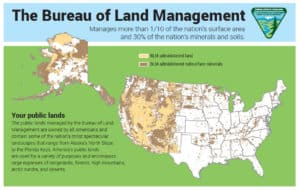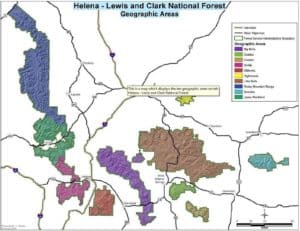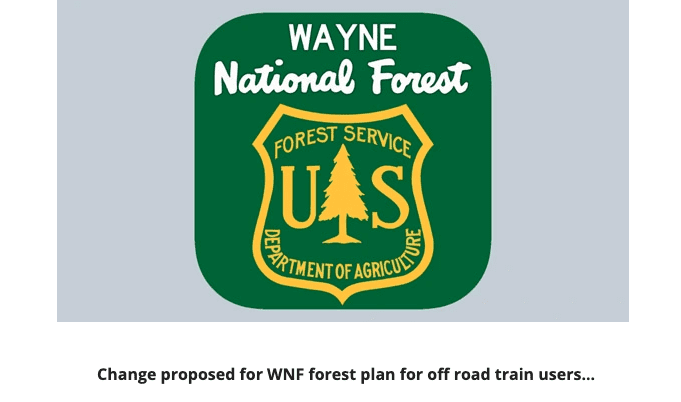The Forest Service summaries are here: Litigation Weekly December 17 2021 EMAIL
The shorter summaries below include a link to court documents.
COURT DECISIONS
The Clinch Coalition v. United States Forest Service (W.D. Virginia): 0001_20211206_ClinchCoalition_v_ForestService_21-3_WDVirginia_NEPA_Rule_memo
On December 6, the district court issued a decision regarding the plaintiffs Motion to Compel Completion of the Administrative Record in the case against the Forest Service rule adopting new NEPA regulations, filed in January, and summarized here.
Round v. U.S. Forest Service (D. Colorado): 0002_20211201_Round_v_ForestServie_20-2092_DColorado_QuietTitle_ComancheNG_order_dismissed
On December 1, the district court issued dismissed plaintiff’s complaint regarding government authority over the Rock Fall and Crooked Arroyo grazing allotments within the Pike and Isabel National Forest on the Comanche National Grasslands because of failure to invoke the Quiet Title Act.
Cascadia Wildlands v. U.S. Forest Service (D. Oregon): (no link, but it appears to be the case discussed here.)
On December 3, the district court issued a preliminary injunction against the Lang Dam and Hwy 46 Vegetative Management Projects on the Willamette National Forest, where plaintiffs alleged the Forest Service modified logging contracts after the 2020 fires without going through the proper environmental review process and without notifying the public.
O’Neil v. Steele (D. Mont.): 0004_20211206_O’Neil_v_Steele_etal_19-140_DMont)ForestPlans_Flathead_Lolo_HelenaLewis&Clark_order
On December 6, the district court upheld the revised 2018 Flathead National Forest Plan and the amended Lolo, Helena-Lewis & Clark and Kootenai National Forests Forest Plans because the Forest Service adequately considered the forest plan’s climate change impacts and Plaintiff’s concerns about the “albedo effect”.
State of Alaska v. Federal Subsistence Board (D. Alaska): 0005_State of Alaska et al v Fed Sub Board, USFS et al 20-195 Region 10 D.Alaska Memorandum
On December 6, the district court upheld a special rural subsistence hunt authorized by the FSB at the beginning of the COVID pandemic and the Forest Service closing certain federal lands to non-federal qualified subsistence users.
NEW CASES
WildEarth Guardians v. U.S. Department of Agriculture (D. Nevada): 0007_20211209_WEG_v_USDA_FS_BLM_21-508_DNevada_CoyoteKilling_DN_FONSI_2020_complaint
On December 9, the plaintiffs filed a complaint against the U.S. Department of Agriculture, Animal and Plant Health Inspection Service-Wildlife Services, Bureau of Land Management and Forest Service, regarding compliance with NEPA and the Wilderness Act for Nevada’s Wildlife Services’ 2020 Final Environmental Assessment and associated decision notice approving a statewide predator damage management program.
- Western Watersheds Project v. Vilsack (D. D.C.): 0006_20211118_WesternWatershedsProject_etal_v_Vilsack_etal_21-3056_DDC_2020AmendedThudarBasinPlan_complaint
(No Forest Service summary.) On November 18, Western Watershed Project, Rocky Mountain Wild and WildEarth Guardians filed a lawsuit opposing an amendment to the Thunder Basin National Grasslands Land and Resource Management Plan. The amendment removes protection of prairie dogs, allegedly adversely affecting other species and reducing the opportunity to reintroduce and recover the endangered black-footed ferret. Plaintiffs views are here; the Medicine Bow-Routt National Forest view is included here.
NOTICE OF INTENT TO SUE
- Kettle Range Conservation Group, Colville National Forest Sanpoil project and revised forest plan: 0008_20211126_NOI_KettleRangeConservationGroup_against_ForestService_FWS_SanpoilProject_ColvilleNF
Dated November 26, the second NOI filed in this case alleges the Forest Service and FWS violated ESA by failing to ensure the project does not jeopardize the Canada lynx, and by failing to reinitiate consultation considering new information.
BLOGGER’S BONUS
- State of Alaska v. USDA (D.C. Cir.)
Court decision: On November 16, the court of appeals held that an appeal of a lower court decision approving the application of the Roadless Rule to the Tongass National Forest is moot because the Trump administration had removed those protections – despite the likelihood that they may be reinstated. A link to the complaint is included in this article.
Notices of intent: On November 17, the Center for Biological Diversity filed two formal notices of intent to sue the U.S. Fish and Wildlife Service for denying or delaying Endangered Species Act protections for 10 species. Species that were denied are the Burrington jumping slug in Washington and Oregon, rubber boa in southern California, Black Creek crayfish in Florida and Virgin River spinedace in Utah. Species that were delayed are the dunes sagebrush lizard in Texas and New Mexico, Temblor legless lizard in California, longsolid and Canoe Creek clubshell mussels in the Southeast, Marrón bacora plant in the Virgin Islands and Siuslaw hairy necked tiger beetle in Oregon.
- Slockish v. U. S. Department of Transportation (9th Cir.)
Court decision: On November 24, the court of appeals dismissed a case from Northwest tribal leaders, based on the government’s claim that no one knows what happened to the stones from a millennia-old altar. In 2008, the government widened U.S. Highway 26, which runs over Mt. Hood (the photo with this article is of the Mt. Hood National Forest, but the article does not say this occurred on national forest land) and the government bulldozed an ancient stone altar, cut down the trees sacred to the tribes and medicinal plants that surround the area, and covered the whole thing with a dirt berm.





